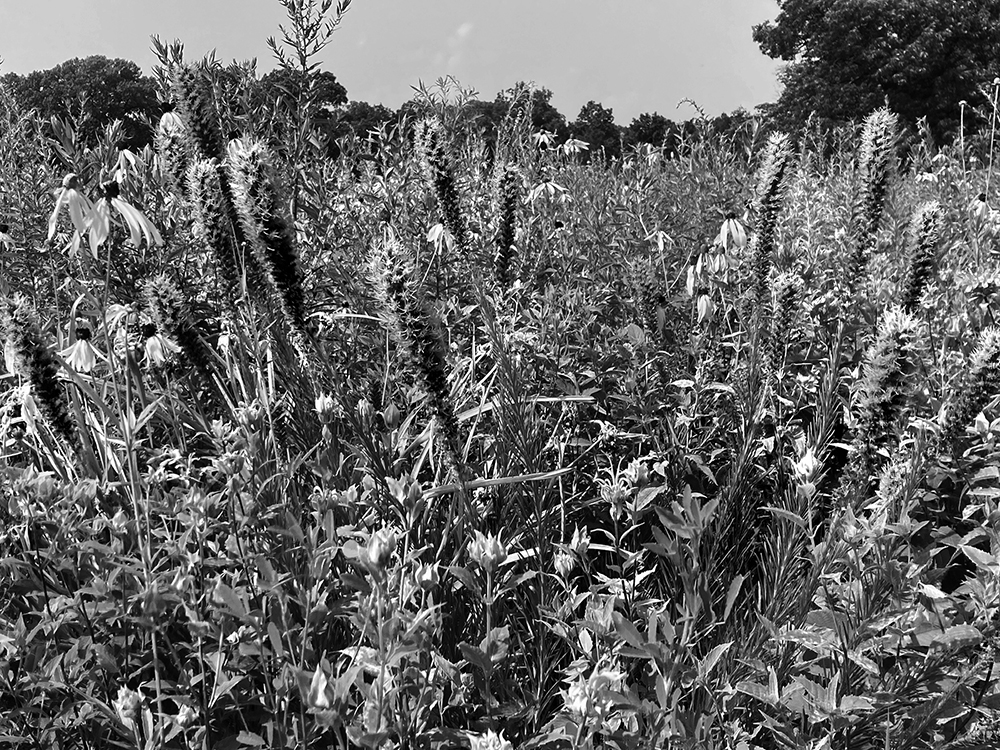
MIKE MILLER
August comes on with a flush of pink as Wild Bergamot blooms. This member of the mint family grows profusely in the summer prairie and entices several species of bumble bees to its plentiful flowers. It is an important plant for them and is crucial for boosting their immune system. The nectar contains compounds that help protect both honey and bumble bees from a fungal parasite known as Nosema. It also provides protection from another parasitic microorganism known as Crithidia. In trade for developing these immune boosting compounds, the bees will pollinate the plant in search of nectar. Healthy bees lead to increased seed production, which ensures the survival and proliferation of the flower. Flowers and bees have evolved this symbiotic relationship to perfection.

Prairie Blazingstar at Tawny Oaks, Peoria County. (PHOTO BY MIKE MILLER)
One of my favorite groups of pink flowers are the blazingstars, in the genus Liatris, in the Aster family. There are three species that are found with regularity here in Central Illinois. They each have their own unique niche in the spectrum of diverse habitats that we label simply, “prairie.” All blazingstar flowers are visited by bumble bees, butterflies, skippers, and bee flies. The caterpillars of the rare Glorious Flower Moth feed on the flowers and seeds.
The first to bloom is the diminutive Cylindrical Blazingstar (Liatris cylindracea). This plant grows around a foot in height and is found on hill prairies and open slopes with gravelly soil. Glacial drift hill prairies along the Kickapoo creek and its tributaries are where it seems to thrive. It is extremely drought tolerant and the smallest of all the local blazingstars. It gets its name from the smooth cylindrical, bract structure just below the pink arrangement of flowers. Most other Liatris species have recurved bracts, that give the base of each flower a spiky appearance.
Next to bloom is the Prairie Blazingstar (Liatris pycnostachya). This plant looks like something straight out of a Dr. Seuss book. They stand up to 4 feet tall and are topped with a foot-long cluster of closely packed, pink colored flower heads. They look like the tail of some comical “pink panther” poking up out of the prairie. These plants are a true beauty and are often grown as ornamentals in home gardens and included in cut flower arrangements. They like rich, loamy, moist, soils. They are residents of black soil prairies, which are a rarity since most have been turned over to agriculture. A few places they can still be seen locally are in small cemetery prairies and railroad remnant prairies.
The last to bloom is the Rough Blazingstar (Liatris aspera). It stands 2-4 feet in height. Its flowers are spaced apart along the top half of the stem. They tend to grow in drier prairies than the Prairie Blazingstar and are fairly drought resistant and tolerate rocky or sandy soils. They are found in several prairie types but are mostly found locally in hill prairies along the bluffs of the Illinois river and its tributaries. This plant will flower well into September. Its pink flowers often hold on until the blues and purples of asters begin to bloom.
The prairie deploys an ever-changing palette. Each week will bring something new to entice the view. Soon the pinks will give way to hues of blue and purple. Then the golds and yellows will come on with a flourish to end the season. All too soon, the vibrant color of flowers will end, and the subtle, muted, winter colors of the dormant prairie will be upon us.
